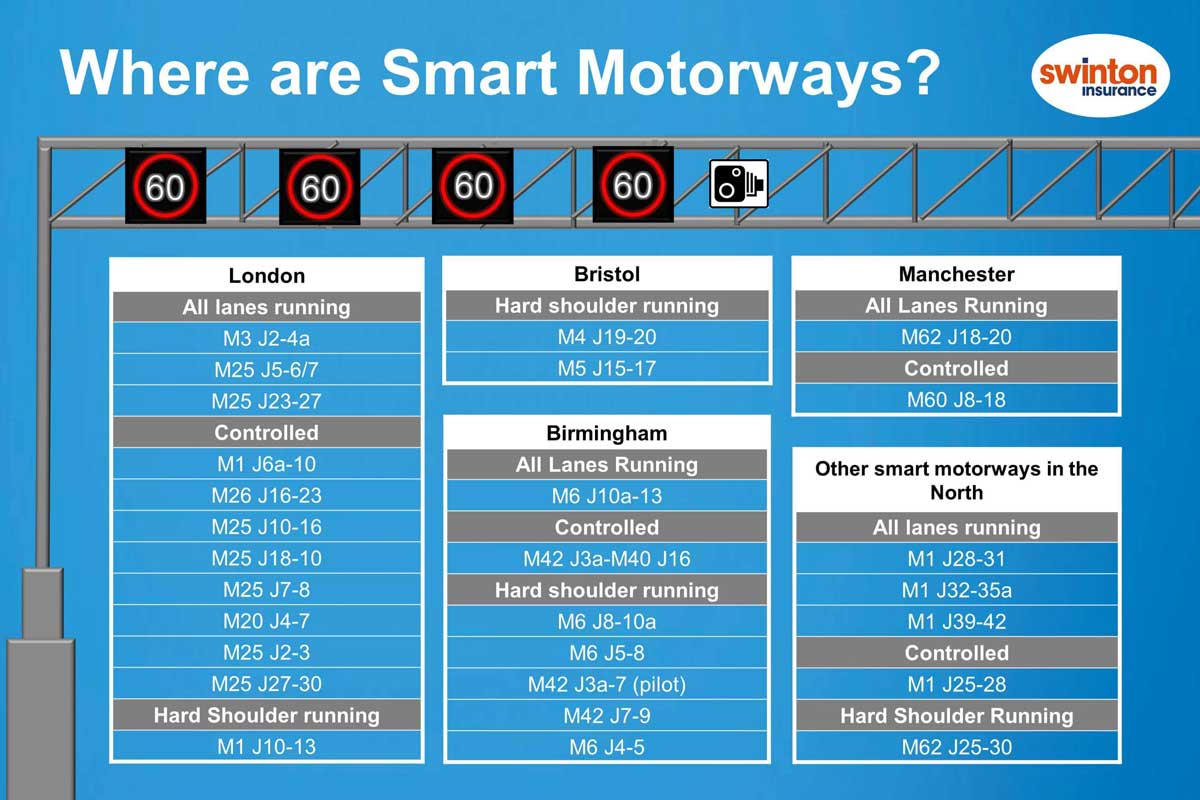UK drivers still confused by smart motorways
How do you drive safely on a smart motorway? What are the laws surrounding them?
If you're not sure, you're not alone. Research from Europcar UK has found that Brits are confused when it comes to the rules around smart motorways.
The study found almost 60 per cent of motorists aren't sure what to do when driving on the hard shoulder. A third of motorists didn't know that the red "X" sign displayed on overhead gantries meant the hard shoulder was closed, while 23 per cent thought an "All Lane Running" notification meant the hard shoulder was open only in emergencies. Drivers also thought it was appropriate to stop on the hard shoulder if they broke down, with only half knowing the correct thing to do.
From speeding fines to 'Red X' signs, we're here to put your mind at rest. Here's everything you need to know about smart motorways.
What is a smart motorway?
A smart motorway is a section of a motorway that uses technology to manage the flow of traffic during busy times.
Operators can vary the speed limit – which can be seen through signs on the overhead gantries. This is to reduce the frustrating stop-start driving conditions that often occur on normal roads.
Warning signs can also be activated to alert drivers of traffic jams and any hazards ahead. Lanes can also be closed to allow emergency vehicles through.
What types of smart motorways are there?
Whilst all enforce variable speed limits, there are actually three types of smart motorways, with the use of the hard shoulder being what differentiates each:
- Controlled motorways retain the hard shoulder, meaning they should only be used in an emergency.
- Dynamic hard shoulder running schemes open the hard shoulder as a running lane. Overhead signs on gantries will indicate whether the hard shoulder is open to traffic.
- All lane running schemes have the hard shoulder as a running lane at all times and it is only closed to traffic if there is an incident. If closed, this will be signalled by a red X on the gantry above, meaning you must exit the lane as soon as possible.

Can I be fined when driving on a smart motorway?
As with standard motorways, there are a number of ways you can be fined. Here's a rundown of things to be aware of, so you don't get caught out.
Speeding fines
Data obtained by The Times revealed that 72,348 people were fined on motorways with variable speed limits in 2017. This was almost double the number a year earlier and a tenfold rise in five years.
Fines for speeding range from £100 up to £2,500. There is a cap of £1,000 on minor speeding offences or up to £2,500 for major ones. Variable amounts of penalty points can also be issued based on the offence.
With more speed cameras and variable speed limits, there is a greater chance of you being caught by cameras, so it is vital you are always checking the overhead gantries for any speed changes.
In addition, many speed cameras on smart motorways operate 24 hours a day and not just when variable limits are being enforced. This means even if the overhead gantry isn't signaling a reduced speed, the cameras are still monitoring if you are exceeding the national speed limit.
Red X fines
A 'Red X' sign is used to identify when a lane is closed and indicates that you should carefully move into an open running lane.
This year Highways England introduced fines for motorists who ignored 'Red X' signs. If you fail to recognise 'Red X' signs you could face a £100 fine and three penalty points.
How can I drive safely on smart motorways?
Here are some quick tips from Highways England for driving carefully on a smart motorway:
- If you see a 'Red X' sign, make sure you leave the lane when it's safe to do so
- Always keep to the speed limit shown on the gantries
- Don't drive into the hard shoulder and across the solid white line unless it's indicated
- If your vehicle experiences difficulties, such as a warning light appears, exit the smart motorway as quickly and safely as possible
- In an emergency use the refuge areas, if there's no hard shoulder
What if I breakdown on a smart motorway?
If your car grinds to a halt on a smart motorway, these five steps will help you stay safe:
1. Move to an emergency refuge area (ERA), if you are able to do so safely. These areas are marked with blue signs and have an orange SOS telephone symbol on them. Different types of smart motorways have different spacing between ERAs, however the furthest you will be away from one is around 1.5 miles.
2. If you cannot get to an emergency refuge area, you should try to get onto the verge, unless there is a safety barrier.
3. Ensure you switch your hazard lights on.
4. If you have to stop in the nearside lane, exit your car via the nearside (left hand) door when it is safe and wait behind the safety barrier, if there is one. If you can't leave your car on the nearside lane, stay inside your car with your seat belt on.
5. If possible, contact Highways England via the roadside emergency telephone provided in all emergency refuge areas. If you can't access the emergency telephone, call '999'.
For more information on what to do if your car breaks down click here.
Or to learn about breakdown cover, visit https://www.swinton.co.uk/car-insurance/breakdown-cover/